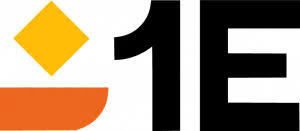IT Managers Reveal Harsh Realities About Surveillance Technology: Survey Says 87% Have Seen Negative Impacts on Workers
IT Managers Reveal Harsh Realities About Surveillance Technology: Survey Says 87% Have Seen Negative Impacts on Workers
1E and Wakefield Research determine more than half of IT workers would turn down an otherwise desirable position if they knew the company used surveillance technology
LONDON & AUSTIN, Texas--(BUSINESS WIRE)--Over the last several years, tools for monitoring employee productivity and tracking remote activity have become more common among businesses—with 79 percent of companies not already using these tools expected to implement them in the next three years. 1E, a leader in Digital Employee Experience (DEX), today unveiled results from its Employee Surveillance Survey that sheds light on the ongoing debate about employee monitoring tools—showing that these tools are better left behind.
Though most employees surveyed already work for companies that use productivity surveillance technology, 73 percent of IT managers revealed they wouldn't be comfortable instructing their staff to deploy it—especially if the company is not being fully transparent. Further, more than a quarter of IT managers indicate an uptick in employees quitting (28%) and difficulty hiring new employees (27%) when these tools are in use.
Conducted by Wakefield Research, 1E’s Employee Surveillance Survey reveals the realities behind how employees feel about using employee productivity surveillance technology (EPST) and how such tools drastically change workplace dynamics. The report draws from a survey of 1,000 respondents—500 IT managers and 500 non-manager IT workers in the U.S.
”Even before conducting this survey, we understood that workplace surveillance is a controversial topic among employees and leaders alike. However, research—both ours and previous—shows that this tactic does far more harm to culture and reputation than good,” said Mark Banfield, CEO of 1E. “In today’s environment, employees require a certain level of trust from their employers. Deploying these surveillance tools negates confidence in leadership and puts IT managers in an unfair position, all for productivity theater. There are better ways to spark productivity that should be explored before turning to surveillance tools.“
Companies that Hide Surveillance Technology Lose out on Top Talent
In today’s competitive job market, it’s more important than ever for business leaders to understand how IT teams will react to deploying surveillance tools. With more than half of IT workers (52%) acknowledging they would turn down an otherwise desirable position if they knew the company used employee productivity surveillance technology—the new data should provoke pause from business leaders. Of those who are not currently at a company using productivity surveillance technology, three-quarters of IT workers say requiring them to deploy it to track other employees would negatively impact their willingness to remain in their current position. In fact, 30 percent would begin actively applying for different jobs, and three percent would immediately quit. Furthermore, 2 in 5 IT workers say it would make them more open to other offers, making them an easy target for recruiters actively seeking to fill their open IT positions.
The Pressure Surveillance Technology Puts on IT Managers
Productivity surveillance technology puts managers in a tough spot and forces them to decide if it is morally right to monitor colleagues' work. Most IT managers wouldn’t force their staff to deploy the technology if they refused, and many would raise their concerns with senior leadership. What’s more alarming, once surveillance technology is deployed, IT workers have a strong desire to defy company policy to inform colleagues about it—72 percent would even help coworkers find workarounds—which creates another hoop for managers to work through. With a third of IT managers viewing the technology as an invasion of privacy, the pushback will continue until leaders stop putting their mid-level leaders in sticky situations.
IT Workers See Surveillance Tools as “Big Brother”
Implementing employee productivity surveillance technology makes most IT workers uneasy—and for good reason. More than a quarter of IT workers (27%) would raise concerns with leadership before complying with a request to deploy such technology and monitor their colleagues, while 5 percent would outright refuse. Below is a breakdown of how surveillance tools affect workers’ mental health and their feelings toward company culture. Since EPST was implemented at their company:
- 26 percent of IT workers saw a decrease in morale
- 30 percent of IT workers saw an increase in employee anxiety
- 28 percent of IT workers saw faster employee burnout
The data show the deep and complicated feelings IT professionals have about what is, essentially, spying.
To learn more about these findings, please download the report here.
About the Methodology
Wakefield Research conducted the 1E Employee Surveillance Survey online, by email invite-only, in two parts (IT workers and IT managers) in February 2023. The IT workers sample included 500 U.S. IT workers employed full-time, in non-management roles, at companies with 500 or more employees. The second part sampled 500 U.S. IT managers, with a minimum seniority of manager, at companies with 500 or more employees. The results of the survey carry a 95% confidence interval and a margin of error of 4.4 percentage points per audience.
About 1E
What if each digital employee experience (DEX) was better than the last? The 1E platform helps IT teams improve end user experience, tighten security, reduce costs, and evolve operations from cost center to strategic enabler. Over one-third of the Fortune 100 rely on 1E's single-agent solution with real-time automation and remediation for more visibility, control, compliance, and observability. Now, all operations teams can provide exceptional employee experiences, increase IT efficiency, and reduce service delivery time. For more information, visit 1E.com.
Contacts
Cara DiFabio, Inkhouse for 1E
1E@inkhouse.com
